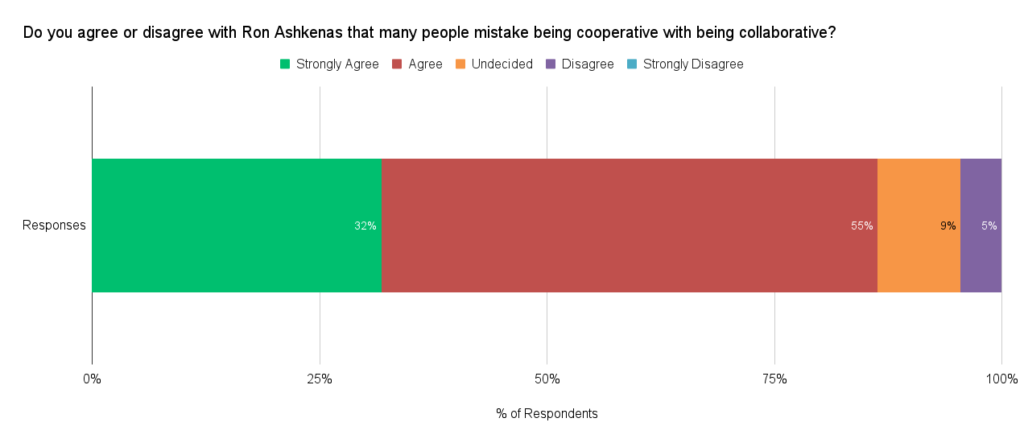Report on Supply Chain Management Practices and Alignment with Sustainable Development Goals
The Impact of Artificial Intelligence on Decent Work and Economic Growth (SDG 8)
Initial Narrative versus Emerging Reality
The prevailing narrative from technology companies and corporate management has positioned Artificial Intelligence (AI) primarily as a tool for productivity enhancement rather than a direct cause of job displacement. This perspective is increasingly being challenged by evidence of rapid automation leading to significant workforce reductions, impacting the stability of employment markets.
Executive Perspectives on AI-Driven Job Displacement
Recent statements from corporate leaders indicate a significant shift in acknowledging the potential for AI to eliminate jobs, particularly in white-collar sectors. This trend poses a direct challenge to achieving SDG 8: Decent Work and Economic Growth.
- Jim Farley, CEO of Ford: Stated that AI is projected to replace “literally half of all white-collar workers in the U.S.”
- Andy Jassy, CEO of Amazon: Noted that the rollout of Generative AI is expected to “reduce our total corporate workforce” in the coming years.
- Tobi Lütke, CEO of Shopify: Implemented a policy requiring managers to prove AI cannot perform a job before a new hire is made.
- Satya Nadella, CEO of Microsoft: Following layoffs of 16,000 workers, he highlighted that AI was already generating 20-30% of the company’s code, indicating a move toward AI-driven efficiency.
- Dario Amodei, CEO of Anthropic: Warned that AI could eliminate half of all entry-level white-collar jobs within one to five years, potentially increasing unemployment to 10-20%.
Implications for Sustainable Development Goals
The accelerated adoption of AI for automation presents critical challenges to several Sustainable Development Goals.
- SDG 8 (Decent Work and Economic Growth): The potential for mass job elimination directly conflicts with the goal of achieving full and productive employment for all. The automation of both cognitive and manual tasks, from accounting to warehouse logistics, threatens job security across multiple sectors.
- SDG 10 (Reduced Inequalities): Widespread job loss without adequate social and economic safety nets could exacerbate income inequality, leaving a significant portion of the white-collar workforce behind.
- SDG 4 (Quality Education): The rapid evolution of job requirements necessitates a fundamental shift towards lifelong learning and targeted reskilling programs to equip the workforce for roles that complement AI technologies.
An Examination of Collaboration in Supply Chains and its Link to SDG 17
Distinguishing Cooperation from True Collaboration
A common assertion within supply chain management is the practice of collaboration with partners. However, analysis suggests that these activities are often limited to cooperation. True collaboration involves working towards a shared objective and outcome, while cooperation is typically confined to supporting another party’s individual goals. This distinction is critical for building the robust partnerships required by SDG 17: Partnerships for the Goals.
Industry Survey Findings
A September 2023 survey of supply chain executives revealed a widespread acknowledgment of this issue.
- 87% of respondents agreed or strongly agreed with the statement that many professionals mistake being cooperative with being collaborative.
- Only 5% of respondents disagreed.
Relevance to SDG 17: Partnerships for the Goals
The lack of genuine collaboration undermines the spirit of SDG 17. Achieving complex sustainability objectives, such as creating circular economies or reducing carbon emissions across a value chain, requires deep partnerships built on shared missions and mutual accountability. A transactional, cooperative approach is insufficient for driving the systemic change needed to meet global sustainability targets.
Challenges in Data Utilization and its Impact on SDG 9 and SDG 12
Effectiveness of Data-to-Action Processes
While many organizations claim to make data-driven decisions, research indicates a significant gap between data availability and effective implementation. This inefficiency hinders progress towards SDG 9 (Industry, Innovation, and Infrastructure) and SDG 12 (Responsible Consumption and Production).
Survey on Decision-Making Effectiveness
A May 2025 survey of supply chain executives highlighted systemic weaknesses in converting data into informed actions.
- 0% of respondents described their organization’s ability to turn data into timely decisions as “Very effective.”
- 71% rated their organization’s effectiveness as “Moderately” or “Ineffectively.”
- 46% identified the primary barrier as data being “available, but not trusted or easily interpreted.”
Connection to Sustainable Innovation and Production
The failure to leverage data effectively has direct consequences for sustainability performance.
- SDG 9 (Industry, Innovation, and Infrastructure): Building resilient, sustainable, and innovative infrastructure relies on accurate data analysis for optimizing logistics, managing assets, and forecasting disruptions. Without trusted data and effective decision-making processes, innovation is stifled.
- SDG 12 (Responsible Consumption and Production): Effective data utilization is fundamental to achieving sustainable production patterns. It enables organizations to monitor resource consumption, minimize waste, improve inventory management, and ensure transparency, all of which are critical components of responsible supply chain management.
Analysis of Sustainable Development Goals (SDGs) in the Article
SDG 8: Decent Work and Economic Growth
This goal is central to the article’s primary discussion on the impact of Artificial Intelligence (AI) on employment. The article extensively covers the threat of AI-driven automation leading to significant job losses, particularly in white-collar sectors, which directly contradicts the aim of achieving full and productive employment.
- The article opens by challenging the narrative that “AI won’t take your job,” presenting evidence from CEOs at Ford, Amazon, and Microsoft who explicitly state that AI will lead to workforce reductions. Ford’s CEO is quoted saying, “Artificial intelligence is going to replace literally half of all white-collar workers in the U.S.”
- It highlights the shift from AI as an “augmentation” tool to an “automation” tool that replaces human workers, quoting Anthropic’s CEO who warns AI could “wipe out half of all entry-level white-collar jobs — and spike unemployment to 10-20% in the next one to five years.”
SDG 9: Industry, Innovation and Infrastructure
This goal is connected to the article’s discussion on the adoption of new technologies (AI) and the effectiveness of data utilization within supply chain organizations. The article points out that while technology is advancing, its implementation and the ability to make data-driven decisions are lagging, which hinders industrial efficiency and innovation.
- The section “We make data-driven decisions” reveals a significant gap in the technological capabilities of supply chain organizations. A survey showed that 0% of respondents believe their organization turns data into decisions “Very effectively.”
- The article identifies barriers such as departmental silos, manual data input into Excel, and a lack of trust in data (“Data is available, but not trusted or easily interpreted”), all of which impede the upgrading of industrial processes and fostering innovation as promoted by SDG 9.
SDG 17: Partnerships for the Goals
This goal is addressed in the section “We collaborate with our colleagues and trading partners.” The article argues that true collaboration, which is essential for building effective partnerships, is often lacking in supply chain management. This failure to form genuine partnerships undermines the collective effort needed to achieve sustainable development.
- The article distinguishes between “cooperation” (supporting another’s goals) and “collaboration” (working towards a shared objective), suggesting that most business interactions are merely cooperative.
- It cites a survey where a combined 87% of supply chain executives agreed that people mistake being cooperative for being collaborative, indicating a weakness in forming the strong partnerships envisioned by SDG 17.
Specific SDG Targets Identified
Targets under SDG 8: Decent Work and Economic Growth
- Target 8.2: Achieve higher levels of economic productivity through diversification, technological upgrading and innovation. The article discusses AI as a technology that enhances productivity, as when Microsoft’s CEO noted that “20% to 30% of the company’s code was being generated by AI,” but it focuses on the negative consequence of this productivity gain: job loss.
- Target 8.5: By 2030, achieve full and productive employment and decent work for all. The article directly challenges the feasibility of this target in the age of AI. The predictions of mass job elimination from leaders at Ford (“replace literally half of all white-collar workers”) and Anthropic (unemployment spiking to “10-20%”) illustrate a direct threat to achieving full employment.
Targets under SDG 9: Industry, Innovation and Infrastructure
- Target 9.5: Enhance scientific research, upgrade the technological capabilities of industrial sectors… encouraging innovation. The article implies that companies are failing to meet this target. The survey finding that 71% of supply chain organizations are only “Moderately” or “Ineffectively” able to turn data into action shows a significant lag in upgrading technological capabilities for effective decision-making.
Targets under SDG 17: Partnerships for the Goals
- Target 17.17: Encourage and promote effective public, public-private and civil society partnerships. The article’s analysis of the lack of true collaboration between “trading partners” suggests that the private-private partnerships within supply chains are often not effective. The survey showing 87% of executives believe there is a misunderstanding of what true collaboration is supports the idea that these partnerships are not being fully realized.
Indicators for Measuring Progress
Indicators related to SDG 8
- Unemployment Rate: The article implies this indicator by quoting a prediction that AI could “spike unemployment to 10-20% in the next one to five years.” This provides a quantifiable measure of the negative impact on employment.
- Rate of Job Displacement by AI/Automation: This is implied through multiple examples, such as Microsoft laying off 9,000 workers, the “Big Four accountancy firms… cutting hundreds of jobs,” and the prediction that AI will “replace literally half of all white-collar workers.”
- Ratio of Robots to Human Workers: The article mentions this directly with the headline, “Amazon Is on the Cusp of Using More Robots Than Humans in Its Warehouses,” which serves as a concrete indicator of automation replacing human labor.
Indicators related to SDG 9
- Perceived Effectiveness of Data Utilization: The article provides a direct indicator from its survey: the percentage of organizations that effectively turn data into decisions. The result that “0% of the respondents said ‘Very effectively’ and only 29%… ‘Effectively'” is a clear metric of current capabilities.
- Prevalence of Barriers to Data-Driven Decision-Making: An indicator is provided by the survey result that “Data is available, but not trusted or easily interpreted” was the top barrier for 46% of respondents.
Indicators related to SDG 17
- Perception of Collaboration vs. Cooperation: The article provides a clear indicator from its survey, where 87% of supply chain executives agreed with the statement that “many people mistake being cooperative with being collaborative.” This percentage can be used to measure the perceived quality and depth of partnerships.
| SDGs | Targets | Indicators |
|---|---|---|
| SDG 8: Decent Work and Economic Growth |
|
|
| SDG 9: Industry, Innovation and Infrastructure |
|
|
| SDG 17: Partnerships for the Goals |
|
|
Source: talkinglogistics.com







